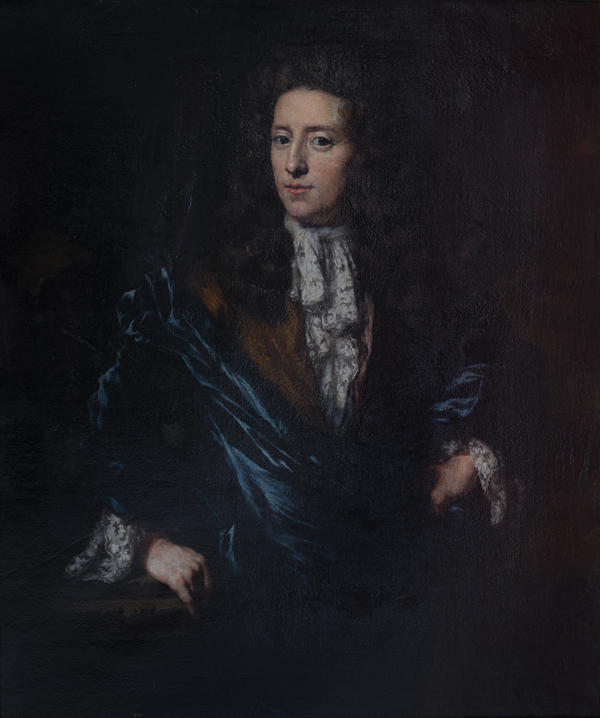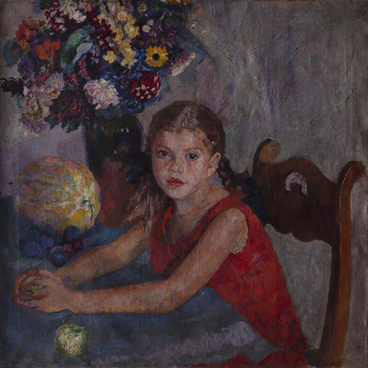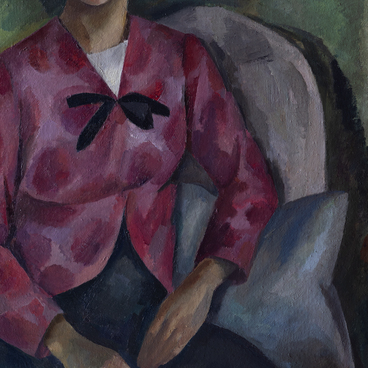The collection of West European paintings from the art collection of the Tyumen Museum contains the Portrait of the Nobleman, which stands out among others. This is a vivid example of the grand portrait of the 17th century. Its author, Nicholas Mas, was known as a fashionable portraitist in his homeland, Holland. It was considered prestigious to pose for him. The master studied in Amsterdam under the great Rembrandt, one mention of which gave his student a special status.
The art of the 17th century is a Baroque era. The literal translation of the word is ‘the wrong pearl’, i.e. ‘whimsicality’. And the meaning of this style is magnificence, parade. This style, which replaced the Renaissance in Italy, spread throughout Europe. It was especially evident in France in the reign of Louis XIV — King of the Sun. The grandeur of royal residences, the magnificence of the court amazed everyone. Artists ‘decorated their king’ creating his portraits. And the European aristocrats tried to imitate this. The world’s first bourgeois republic of Holland also had its own aristocracy. Its representatives ordered portraits from famous masters.
Mas depicts the nobleman according to all the rules of the ceremonial portrait: a proud pose, gestures, facial expression emphasize the high position of the hero in society. A sumptuous allonge wig, jabot and cuffs made of expensive lace, a cape of blue silk complement the image.
Rembrandt, the teacher of Nicholas Mas, was sure to show the inner world of his clients, and his student limited himself to the external effect. Nicholas Mas is famous for his portraits and genre scenes. He is one of the last representatives of the Golden Age of Dutch painting. He was born into the family of wealthy merchant Gerrit Mas and Ida Herman. Apparently, he began to study painting in Dordrecht. Around 1648 he came to Amsterdam and entered the workshop of Rembrandt, where he stayed until 1653.
His early paintings, which depict genre scenes in dark red tones, are so reminiscent of Rembrandt’s paintings of the same time that on several occasions Mas’s works in various museums were attributed to Rembrandt. In 1653, Nicholas Mas returned to Dordrecht and opened his own workshop. The peak of his work is considered to be the period from 1655 to 1665, when he mainly depicted genre scenes taking place in the entrance rooms with windows. Between 1665 and 1667, Mas visited Antwerp and maybe even lived there for a while. He then returned to Dordrecht and in 1673 moved to Amsterdam, where he lived until his death. In the 1660s, he moved away from the Rembrandt style and began to paint portraits in bright colors, closer to the style of van Dyck, which had great success.
The art of the 17th century is a Baroque era. The literal translation of the word is ‘the wrong pearl’, i.e. ‘whimsicality’. And the meaning of this style is magnificence, parade. This style, which replaced the Renaissance in Italy, spread throughout Europe. It was especially evident in France in the reign of Louis XIV — King of the Sun. The grandeur of royal residences, the magnificence of the court amazed everyone. Artists ‘decorated their king’ creating his portraits. And the European aristocrats tried to imitate this. The world’s first bourgeois republic of Holland also had its own aristocracy. Its representatives ordered portraits from famous masters.
Mas depicts the nobleman according to all the rules of the ceremonial portrait: a proud pose, gestures, facial expression emphasize the high position of the hero in society. A sumptuous allonge wig, jabot and cuffs made of expensive lace, a cape of blue silk complement the image.
Rembrandt, the teacher of Nicholas Mas, was sure to show the inner world of his clients, and his student limited himself to the external effect. Nicholas Mas is famous for his portraits and genre scenes. He is one of the last representatives of the Golden Age of Dutch painting. He was born into the family of wealthy merchant Gerrit Mas and Ida Herman. Apparently, he began to study painting in Dordrecht. Around 1648 he came to Amsterdam and entered the workshop of Rembrandt, where he stayed until 1653.
His early paintings, which depict genre scenes in dark red tones, are so reminiscent of Rembrandt’s paintings of the same time that on several occasions Mas’s works in various museums were attributed to Rembrandt. In 1653, Nicholas Mas returned to Dordrecht and opened his own workshop. The peak of his work is considered to be the period from 1655 to 1665, when he mainly depicted genre scenes taking place in the entrance rooms with windows. Between 1665 and 1667, Mas visited Antwerp and maybe even lived there for a while. He then returned to Dordrecht and in 1673 moved to Amsterdam, where he lived until his death. In the 1660s, he moved away from the Rembrandt style and began to paint portraits in bright colors, closer to the style of van Dyck, which had great success.



